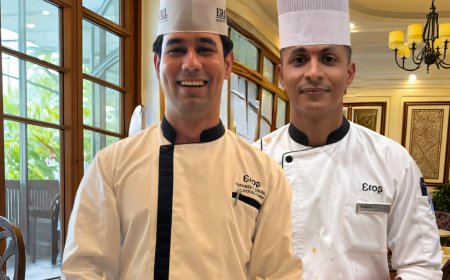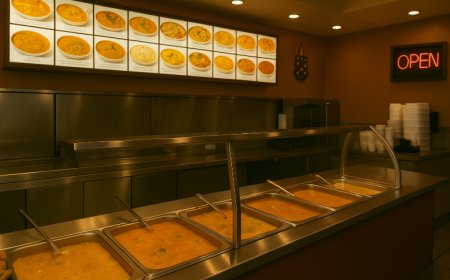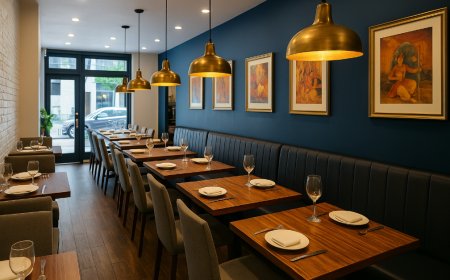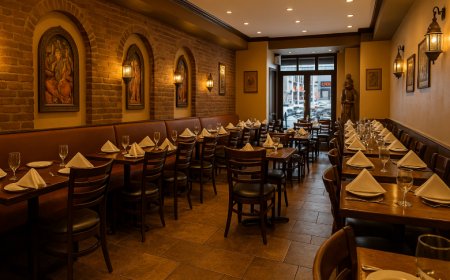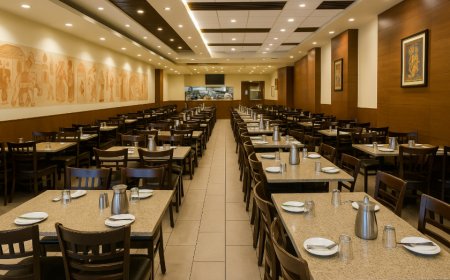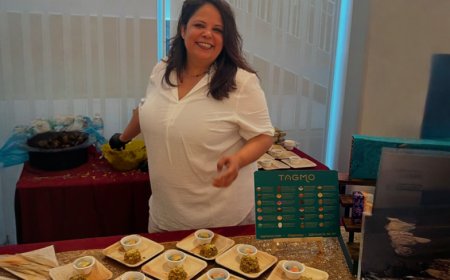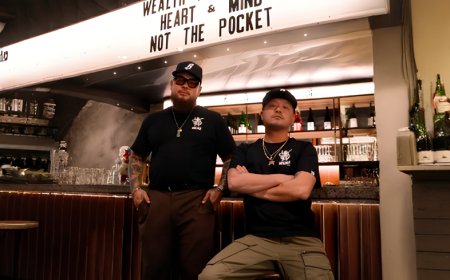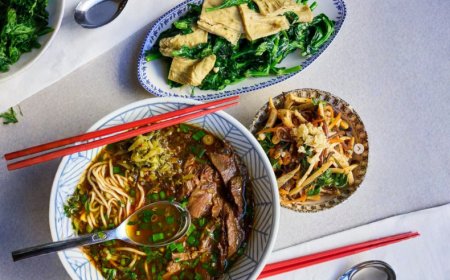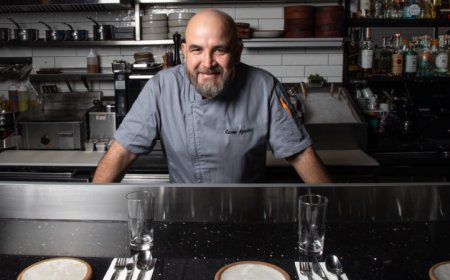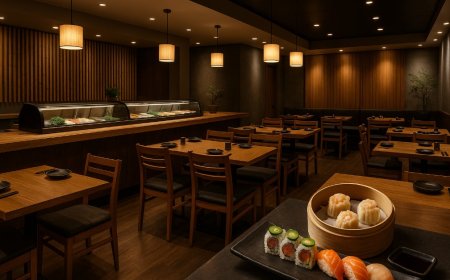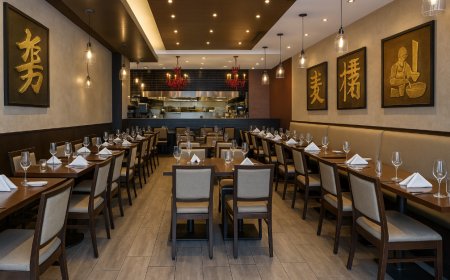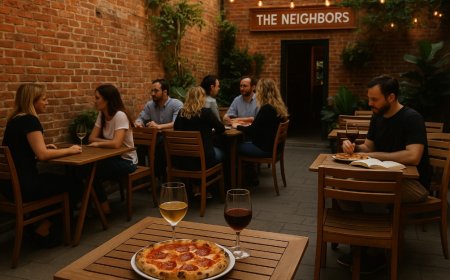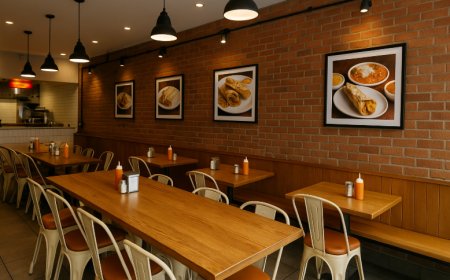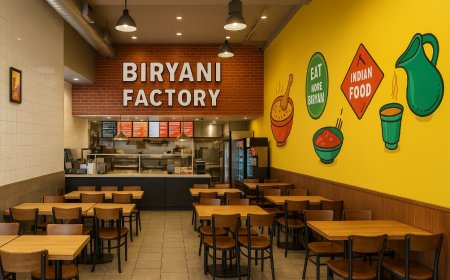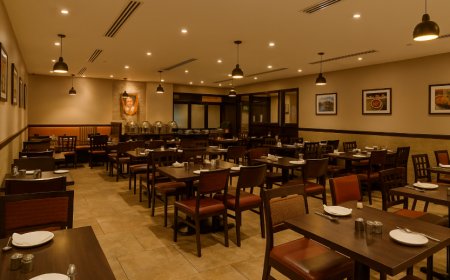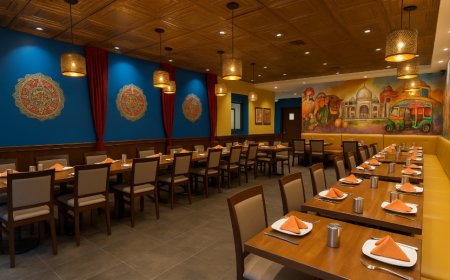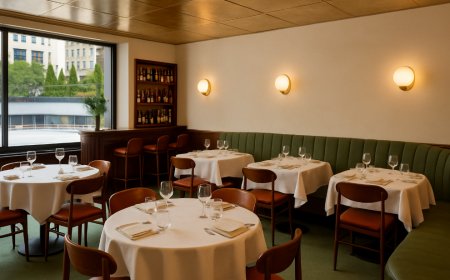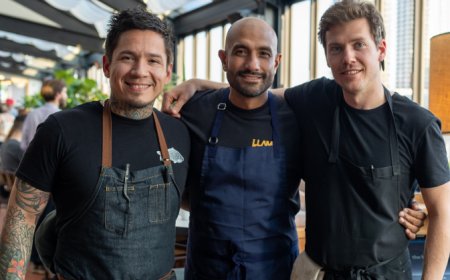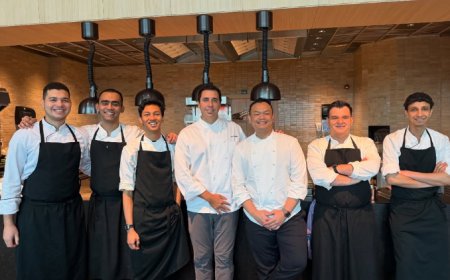Simpson Wong Returns with Kancil: A Soulful Malaysian Culinary Revival on the Upper West Side
Acclaimed chef Simpson Wong returns to New York’s dining scene with Kancil, a fresh Malaysian restaurant on the Upper West Side. Blending heritage, street food, and innovation, this is his boldest, most personal culinary chapter yet.

A Culinary Homecoming for Chef Simpson Wong
New York City’s food scene has always celebrated bold personalities and eclectic plates, and few chefs embody that fusion as fully as Simpson Wong. After a years-long absence, the pioneering Malaysian-born chef makes his much-anticipated return with Kancil, a modern ode to his heritage, opening in the Upper West Side.
For those who remember the pulse of Manhattan’s Asian dining renaissance in the early 2000s, Wong is a familiar name. His return isn’t just a revival—it’s a reinvention, steeped in nostalgia, street culture, and a deep-rooted culinary philosophy that spans decades and continents.
The Story Behind Kancil
Kancil isn’t merely the name of a restaurant—it’s a symbol. In Malaysian folklore, the kancil (or mousedeer) is clever, nimble, and resourceful. It’s a fitting emblem for Wong’s career and this new venture, which combines the street-smart spirit of Southeast Asian hawker stalls with polished technique and seasonality.
Opening on November 15, the 40-seat venue sits on Amsterdam Avenue, previously home to Wau. It’s a collaboration with restaurateur Salil Mehta, known for Indian and Southeast Asian hotspots like Laut and Kanyakumari. The space is bright and inviting, with large windows and a natural palette that reflects both simplicity and depth—mirroring the food it serves.
A Chef’s Culinary Evolution
Wong’s culinary journey began near a rainforest north of Kuala Lumpur. A self-taught chef, he immigrated to the U.S. and quickly stood out in a landscape that once saw authentic Southeast Asian cuisine pushed to the margins.
In 1996, long before pan-Asian flavors became mainstream, Wong opened Cafe Asean in the West Village. Modest in appearance but bold in flavor, it quietly introduced New Yorkers to the unfiltered essence of Vietnamese, Thai, and Malaysian home cooking. The restaurant enjoyed a two-decade run before closing in 2016—a testament to its impact.
Wong’s later ventures, Jefferson and Wong, pushed the boundaries further. He paired familiar American dining formats with unusual ingredients like duck tongue and fermented shrimp paste, earning praise for his fearless interpretation of Asian fusion. He was among the first to pair these flavors with seasonal, locally sourced ingredients—a trend now seen across the industry.
His final project before his hiatus, Chomp Chomp, leaned into street food with flair—think prawn noodles, lamb shank rendang, and Hainanese chicken rice. Each dish brought Southeast Asia’s chaotic, joyful food stalls to life. Then, without much warning, Wong stepped away.
What to Expect on the Kancil Menu
At Kancil, Wong is bringing his full range of experience to the table. The menu is a journey through the lesser-seen sides of Malaysian cuisine. Diners will encounter shareable snacks and entrees like cassava croquettes, chili-laced noodles, and traditional bites reimagined for modern palates.
Wong is staying true to his Malaysian roots but applying contemporary culinary techniques and using seasonal, organic ingredients wherever possible. Expect dishes with layered spice profiles, complex textures, and surprises that linger—tongue-numbing peppercorns, caramelized sambal, or silky broths poured tableside.
The beverage program is equally thoughtful. Alongside low-intervention wines and innovative cocktails, dessert comes with a twist. Pastry chef Heidi Stanley adds her own multicultural flair with creations like jackfruit trifle and kuih bahulu, while Wong’s own Two Rabbits ice cream brand churns out flavors like mala cocoa and pineapple tart.
A Bold Partnership: Salil Mehta x Simpson Wong
This revival wasn’t originally planned as a full-fledged comeback. When Salil Mehta invited Wong to consult on dishes at Wau, neither expected it to evolve into a full concept. But as they collaborated, it became clear that there was more potential in a shared vision.
“Wong was ready again,” Mehta remarked during planning. After several years of rest, travel, and reflection, the chef returned with new energy and a refined perspective. The duo decided to rebrand and relaunch the space altogether—giving birth to Kancil.
It’s a bit of a gamble, especially in a neighborhood that hasn’t always been a stronghold for Southeast Asian cuisine. But both chefs believe the timing—and the appetite—is right.
Malaysian Cuisine on the Rise
Globally, Malaysian food has started to claim its rightful place in the culinary spotlight. While dishes like laksa, nasi lemak, and satay have achieved some recognition, the cuisine remains underrepresented in most U.S. cities.
Wong sees Kancil as a chance to deepen the conversation, moving beyond the expected and into more obscure, layered regional dishes. He’s not just cooking from memory—he’s also informed by recent travels through Malaysia, where he sought out flavors from jungles, coastlines, and night markets.
The aim isn’t to replicate hawker stalls but to interpret them respectfully—preserving soul while embracing innovation.
A Comeback Steeped in Passion
For longtime fans, Wong’s return is an emotional one. Many recall the magic of his earlier menus, where unfamiliar ingredients were transformed into soulful, revelatory meals. His temporary absence created a void—one that Kancil now fills with grace.
But for newcomers, Kancil offers something equally valuable: a crash course in one of the world’s richest yet least understood culinary traditions, taught by someone with unmatched experience and heart.
The combination of Wong’s vision, Mehta’s operational prowess, and Stanley’s inventive desserts make this not just a restaurant but a statement. A new chapter, deeply personal and proudly Malaysian.
Conclusion: A New Era for Malaysian Cuisine in NYC
As Kancil prepares to open its doors, it does more than mark the return of a celebrated chef—it signals a new momentum for Malaysian food in New York. This isn’t just about nostalgia or novelty. It’s about building cultural bridges, elevating tradition, and proving that some flavors were just waiting for the right time to shine.
What's Your Reaction?
 Like
0
Like
0
 Dislike
0
Dislike
0
 Love
0
Love
0
 Funny
0
Funny
0
 Angry
0
Angry
0
 Sad
0
Sad
0
 Wow
0
Wow
0
